

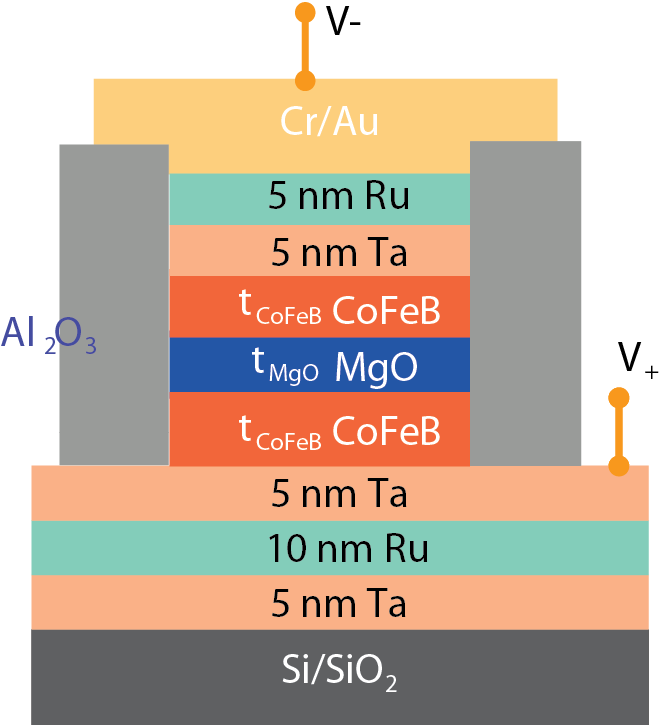 |
STT PMA MTJThis model integrates the physical models of static, dynamic behaviors and reliability issues, which can be used to perform more accurate and complex reliability analysis of complex hybrid circuits before fabrication. |
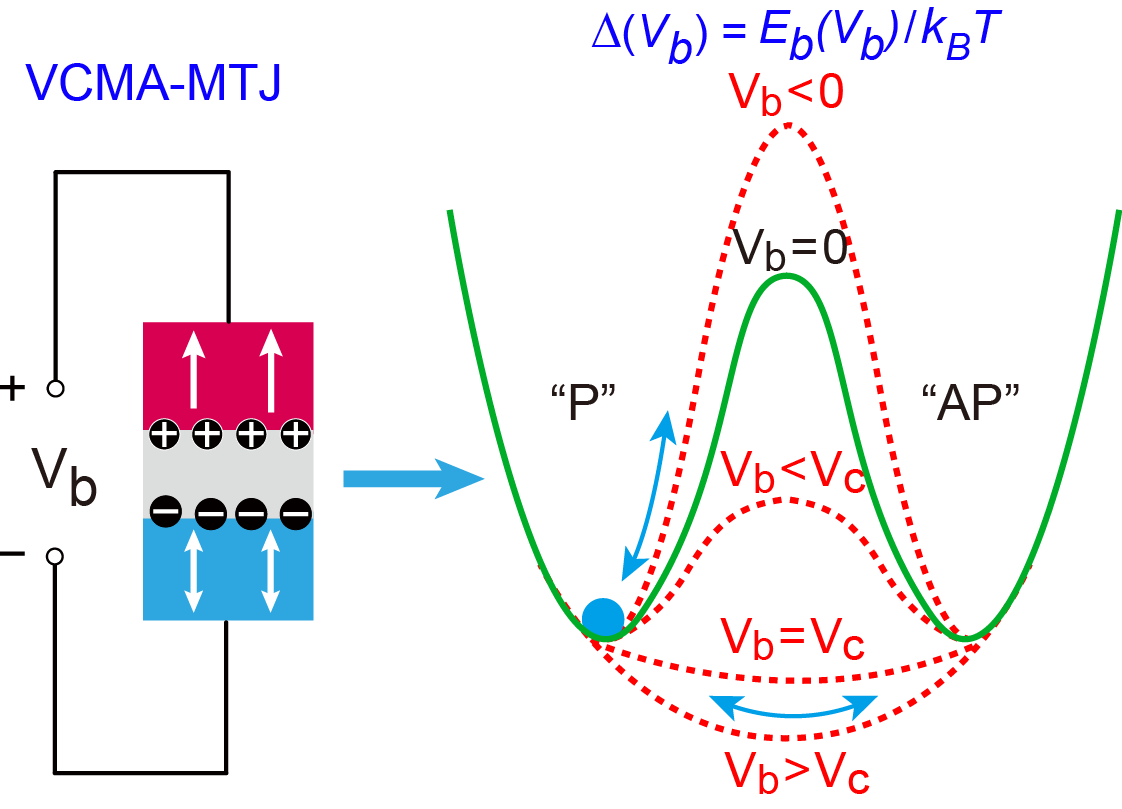 |
STT VCMA MTJThis model file contains magnetic precession model of VCMA-MTJ, STT-assisted magnetic precession model of VCMA-MTJ as well as STT-assisted and thermally-activated magnetic precession model of VCMA-MTJ. It is used to simulate MTJ switching behaviors under given stimulation when taking the Electric Field Effect other than Spin Transfer Torque Effect into consideration, providing an easy way to start the simulation of circuit design with VCMA-MTJ/CMOS. |
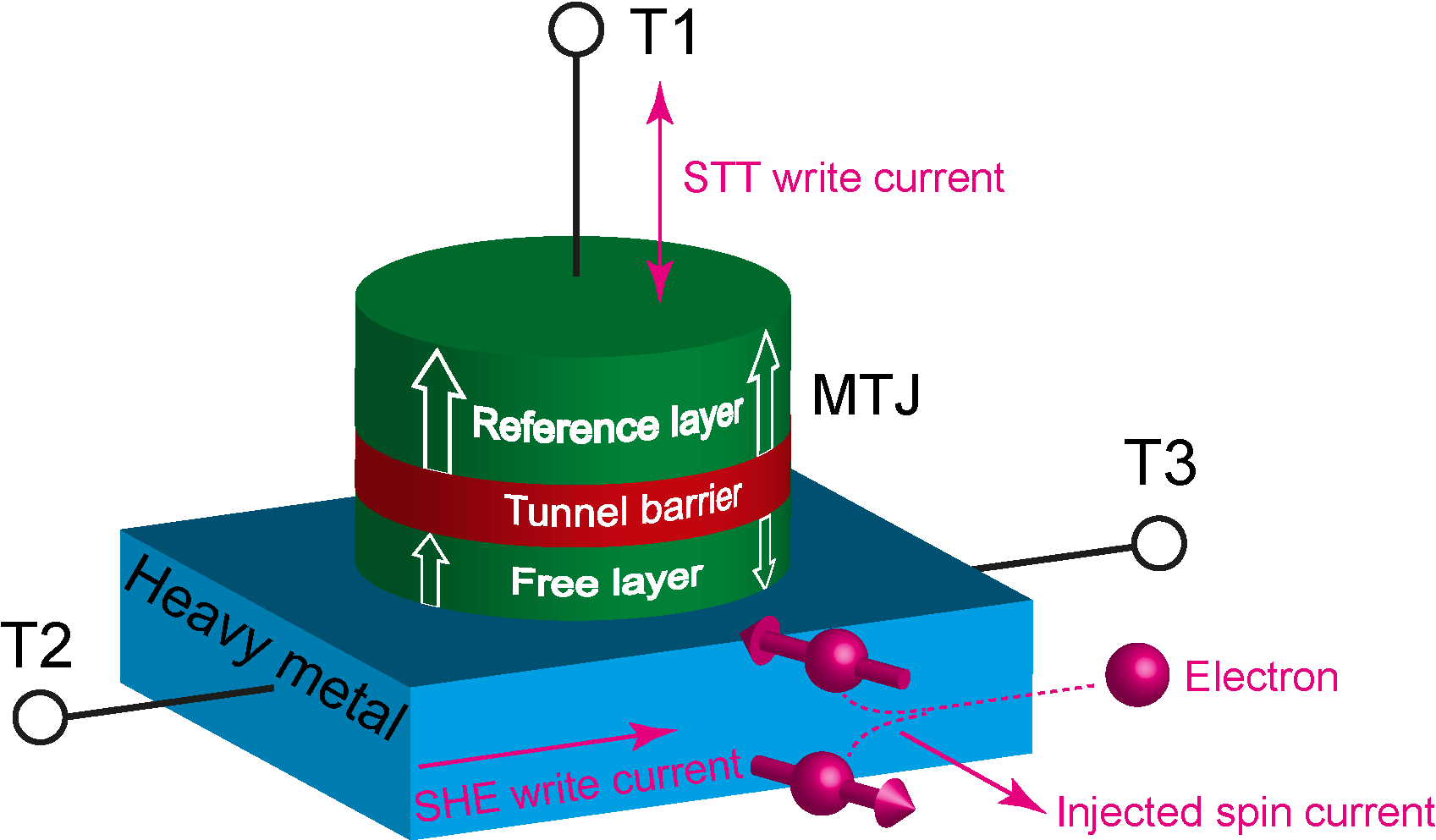 |
STT SOT MTJThis model describes the electrical behaviors of a three-terminal device, where a perpendicular-anisotropy magnetic tunnel junction (MTJ) is fabricated above a heavy-metal stripe. The following effects are taken into account by this model: i) the spin transfer torque (STT) induced by a current flowing through the MTJ; ii) the asymmetry of the STT efficiency between two switching directions; iii) the damping-like and field-like spin orbit torque (SOT) induced by a current passing the heavy-metal stripe; iv) the torque induced by the external magnetic field or exchange bias; v) the dependence of the TMR ratio on the bias voltage; vi) the relationship between the MTJ resistance and the magnetization polar angle. This model can be used to simulate the three-terminal MTJ-based non-volatile memory and logic circuits. |
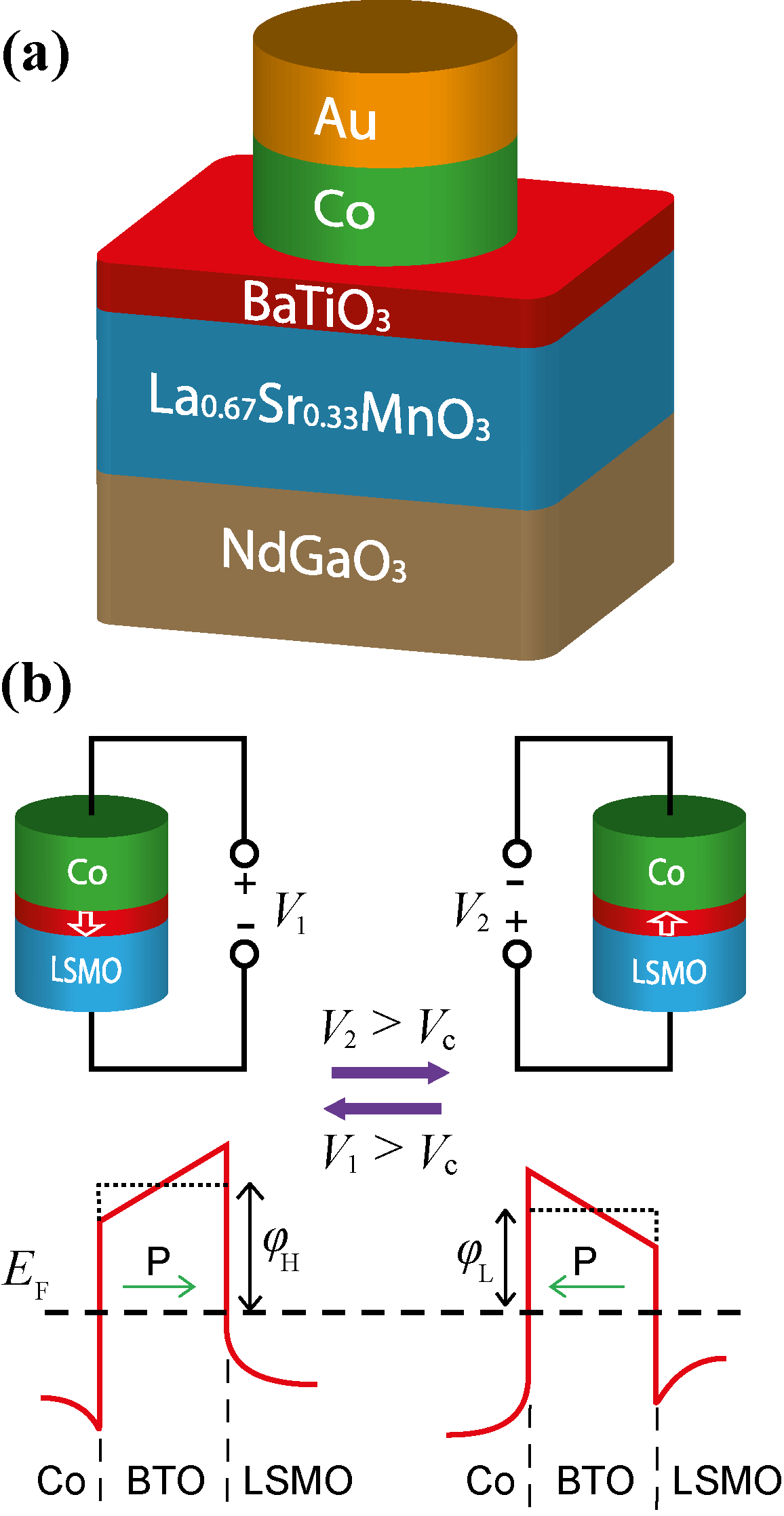 |
FTJThis model mainly describes the I-V characteristic and memristive behavior of the ferroelectric tunnel junction. The I-V characteristic is modeled by Gruverman model and Fowler-Nordheim tunneling, respectively, at the low and high voltage. By setting the domain percentage to be a state variable, the memristive behavior is described by Merz’s law, KAI model and creep process model. This model can be used to simulate the FTJ-based non-volatile memory/logic circuits and neuromorphic systems. |
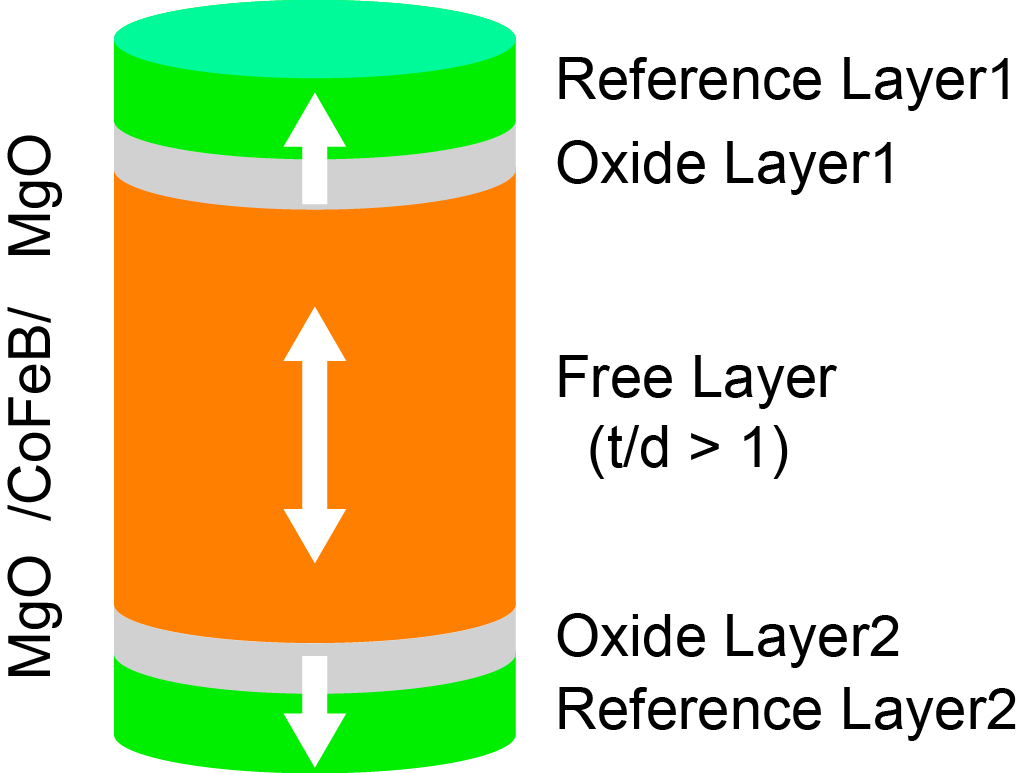 |
s-PMA DMTJThe s-PMA DMTJ model can extend the MTJ design down to 10nm through the modulation of the shape anisotropy energy, which can be calculated based on the demagnetization field energy. It paves the way down to sub 10nm for the perpendicular magnetic tunnel junctions. Meanwhile, the model is adjustable to both the diameter and thickness changes. With the s-PMA DMTJ model, relative circuit design and analysis such as DC and Transient simulations have been performed. |
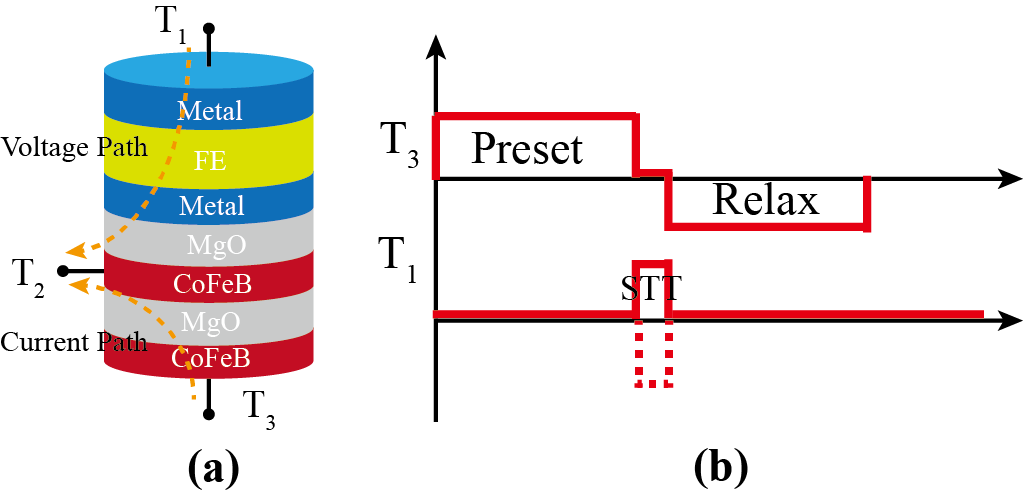 |
NC VCMA MTJDraw support from the amplified VCMA effect and the 3-step operation scenario, this MTJ cell can dramatically lower the energy consumption as well as ensure high reliability. Besides, all spin logic devices based on the basic MTJ cell also can benefit from this design. |
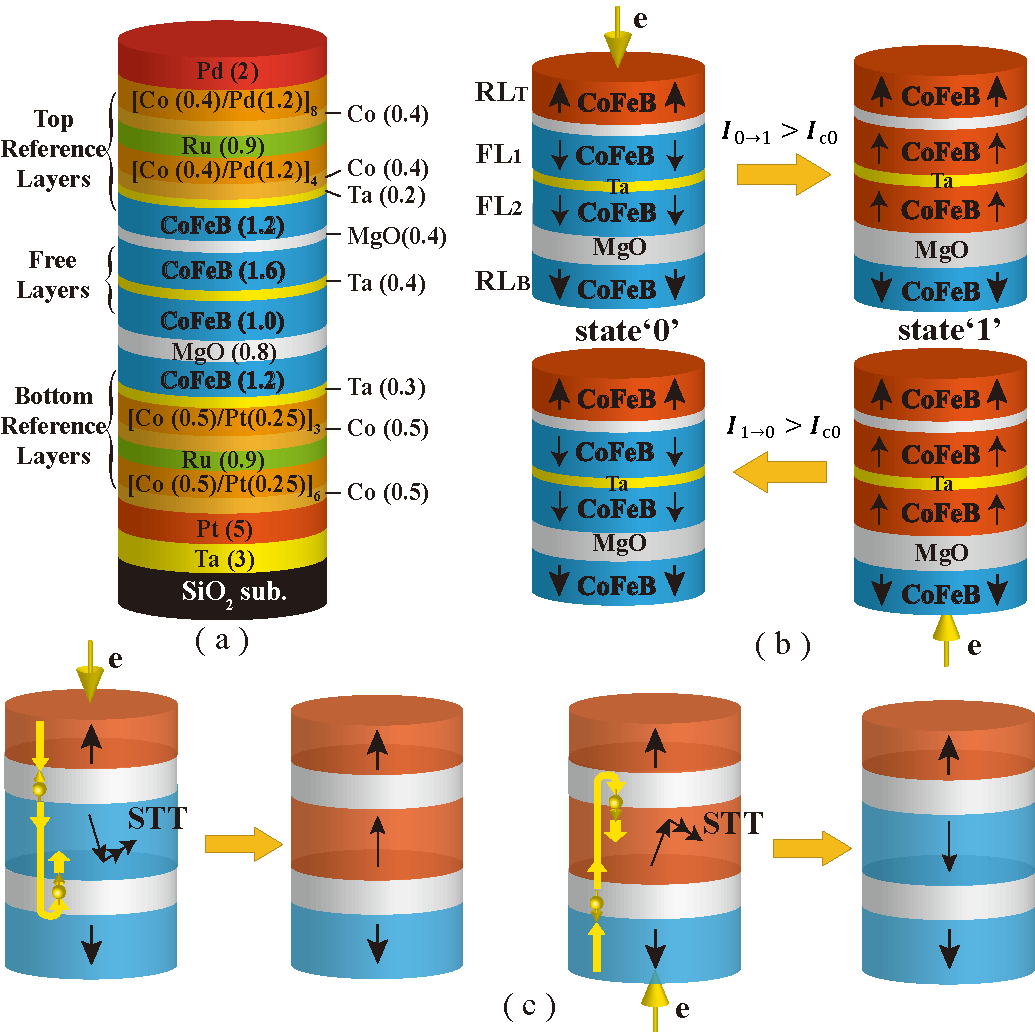 |
Double-Barrier MTJThis model presents the utilization of a compact model of CoFeB/MgO double-barrier MTJ (DMTJ), a system exhibiting the best tunnel magneto-resistance ratio and switching performance. |
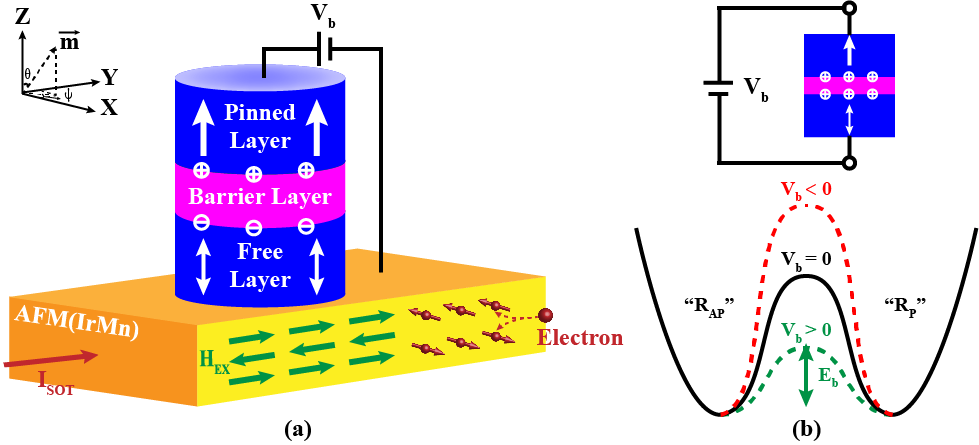 |
Voltage-Gated SOT MTJThis model file introduces a compact model of a voltage-gated spin-orbit torque magnetic tunnel junction (VGSOT-MTJ), where one MTJ with perpendicular magnetic anisotropy (PMA) is fabricated on an antiferromagnetic-metal (AFM) stripe. This model integrates the physical models for both the static and dynamic switching behavior. To exactly describe the magnetization switching of the VGSOT-MTJ, the following effects are taken into account in this model: (1) Voltage-Controlled Magnetic Anisotropy (VCMA) effect induced by the bias voltage across the MTJ; (2) damping- and field-like Spin-Orbit-Torque (SOT) effect induced by the charge current flowing through the AFM stripe; (3) damping- and field-like Spin Transfer Torque (STT) effect induced by the charge current flowing through the MTJ. Additionally, both the dependence of the TMR ratio on the bias voltage and the relationship between the MTJ resistance and the magnetization polar angle are also considered in this model. It provides an easy way to simulate the non-volatile memory and logic circuits based on the VGSOT-MTJ device. |